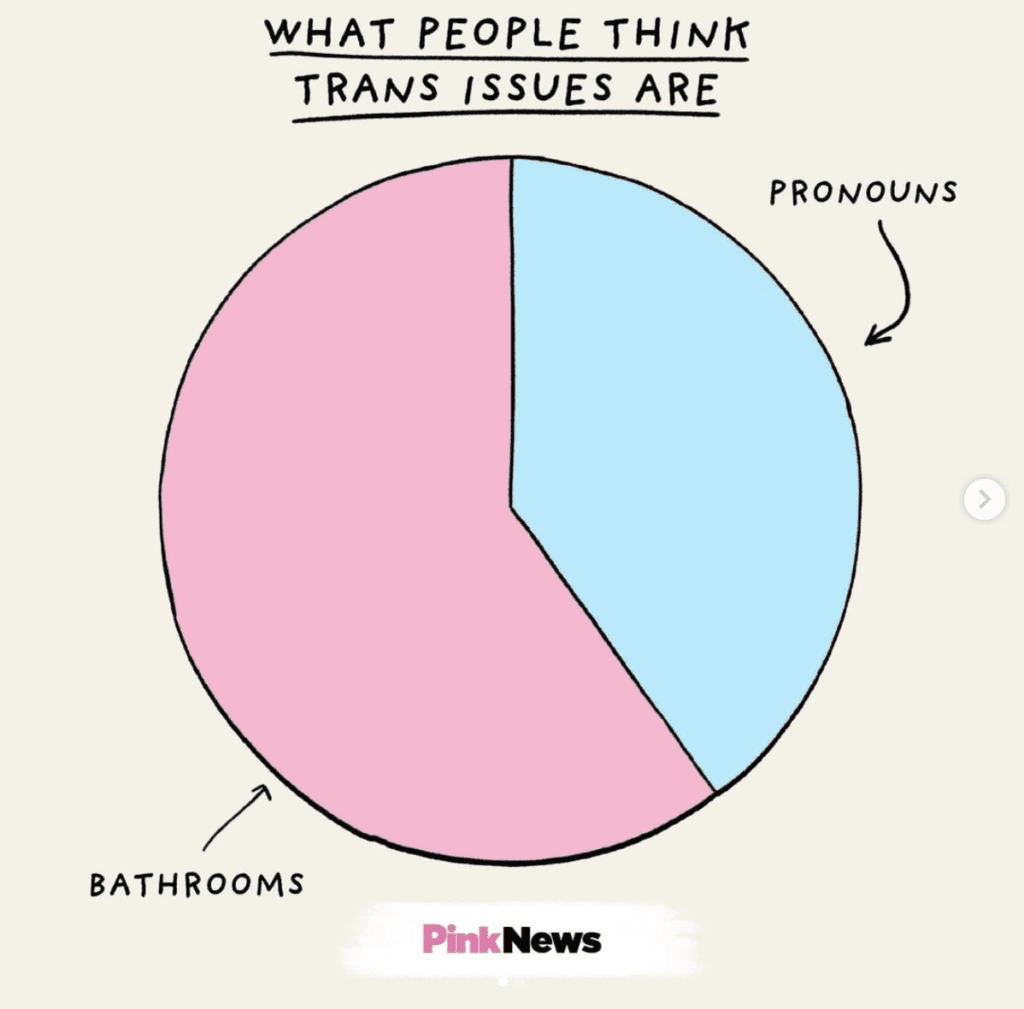More than a tick box: how to create trans-inclusive workplaces
There is a clear need for more trans-inclusive workplaces, but how should companies go about this?
Why You Should Care
Trans and non-binary people continue to face discrimination in the workplace.
One in four trans people were not open about their gender identity at work.
How can employers create trans-inclusive workplaces and an empowered workforce?
Today, Wednesday 31 March, is the International Transgender Day of Visibility.
It’s a day that aims to celebrate the successes of the transgender and gender non-conforming communities, as well as raise awareness about the need to continue to push for a world where every person — no matter their gender identity — is respected, protected, and safe.
Trans and non-binary individuals are discriminated against in every area of their lives and, unfortunately, the workplace is no exception. The shocking statistics speak for themselves.
Trans discrimination in the workplace
LGBT rights charity Stonewall’s 2020 Workplace report found that a third of trans people in the UK had been the target of negative comments or conduct from their colleagues as a result of the gender identity. One in five wouldn’t report transphobic bullying in the workplace. This was based on a survey of more than 5,000 LGBT individuals across the UK in 2017.
Fewer than half of LGBT staff surveyed said there were adequate workplace equality policies to protect trans people in the workplace and only 28% noted that senior management had demonstrated a visible commitment to trans equality.
Stonewall’s research also found that a third of trans employees were excluded by their colleagues for being LGBT and more than one in six trans individuals were not addressed with their correct name or pronoun at work. As a result of this, one in four trans people were not open at work about being trans, and the figure rose to 37% for non-binary individuals.
These figures may be specific to the UK, but stats across the pond tell a similar, and heartbreaking, story.
A 2015 survey of 27,715 trans individuals living in the United States revealed that a staggering 77% of those who held a job in the year prior took active steps to avoid mistreatment and discrimination at work, including hiding their gender identity, delaying their gender transition (or living as their true selves only outside of work), refraining from asking their employers to use their correct pronouns, or ultimately, quitting their jobs.
Some 67% reported negative outcomes such as being fired or forced to resign, not being hired, or being denied a promotion. Nearly a quarter of respondents reported other types of discrimination or mistreatment based on their gender identity or expression. For example, being asked to present as the sex assigned to them at birth to stay in a job, having private information about their trans identity shared without permission, or being denied access to WCs that align with their gender identity. None of this is OK.
Businesses need to “understand that trans and non-binary people are in your organizations — between one in 60 and one in 100 people are trans — if you can’t see them it is because your organization is not a place where they feel okay to be out. That means you will not be getting the best from those employees and more than likely lose the many advantages [of] having a truly diverse workforce,” explains Bobbi Pickard, the founder and director of Trans in the City, a trans and non-binary awareness group.
Pharma giant AstraZeneca’s senior vice-president of reward and inclusion Rebekah Martin agrees:
“Making it psychologically safe for LGBTQ+ employees at work should be a priority for companies that are striving to win the war for talent for their companies.”
Creating trans-inclusive workplaces
There is a clear need for more trans-inclusive workplaces, but how should companies go about this?
Let’s start with pronouns and trans-inclusive language. Insurance company Aviva, which was listed by Stonewall as one of the top 20 trans employers in 2020, is using this Transgender Day of Visibility to, among other things, encourage all employees to educate themselves on trans issues and add their pronouns to their email signature, which helps to “normalize sharing pronouns.” Aviva’s talent acquisition and inclusion lead Jonny Briggs notes that more and more staff have added pronouns to their email signature.
People management software HiBob recently introduced a feature that expands the pronouns an individual can use, as reported by Tech Republic. “These new features on bob — including the non-binary gender identity feature and preferred pronoun features — allow companies to give their workers power over how they are addressed and identified by their coworkers,” said HiBob senior director Ali Fazal.
Pickard said the pandemic and remote working have boosted online learning and awareness raising. Online tools need to be used to “raise trans awareness, but also disseminate information and guidance to managers on how to create trans positive teams and support trans employees appropriately.”
In addition, focusing on HR tech, Briggs explains that Aviva “employees can now state their preferred name and gender-neutral title using Aviva’s HR software, which may help employees transitioning at work and non-binary colleagues.”
Similarly, AstraZeneca has, particularly as a result of remote working due to the pandemic, focused on data collection in order to track the progress of its aim to “eliminate unconscious bias at every stage of the talent pathway.”
“We improved the technology we currently use to gather employee data and launched a campaign to encourage our people around the world to input as much of their diversity data as possible,” explains Martin.
This included adding new gender designations for employees, including gender neutral.
This is a great step in the right direction. However, Pickard notes that these data-focused efforts are only appropriate and functional once workplaces have become a safe place for trans and non-binary people to come out.
Beyond toilets and pronouns
It’s important to remember, as a recent Instagram post by Pink News emphasized, that trans issues are more complex than just toilets and pronouns.
Although gender-neutral toilets and employees popping pronouns in email signatures are great policies, trans-inclusive workplaces need to go beyond that.

Credit: Pink News via Instagram.
Allyship and safe space initiatives are particularly crucial to empowering workplaces where trans and non-binary people feel like they can bring their whole selves to work.
For instance, Aviva has an Allies guide containing “specific content for employees to learn more about being an ally,” explains Briggs. JLL, another company on Stonewall’s top 20 trans employers in 2020, also focuses on allyship and ally training.
In a similar vein, Stonewall suggests employers need to support visible LGBT role models in their organizations. It is well known how important public, celebrity role models are to marginalized communities – a fantastic example is actor Elliot Page who came out as transgender in December and was featured on the cover of TIME magazine – but it is also crucial that trans and non-binary people have people with similar experiences to look up to in their day to day life at work.
Creating a safe space also includes supporting trans and non-binary employees in the deeply personal process of transitioning. This can also feed into another issue facing trans and gender non-conforming people: access to healthcare.
JLL launched a policy in 2018 to support those transitioning in the workplace. At the same time, JLL discussed with its medical provider that it would extend cover to those who were transitioning. This meant healthcare cover included counselling, assessment with a gender identity specialist, and hormone treatment for up to two years.
This was “in recognition that one of the biggest issues for people with gender dysphoria who wish to transition is the length of time that they must wait to be seen by specialists,” a JLL spokesperson told Property Week.
Technology solutions can help to support staff going through a transition. For instance, Euphoria is developing a suite of applications that empower those transitioning both inside the workplace and beyond.
JLL’s UK director of diversity and inclusion Claire England adds: “We know from those colleagues that are transitioning that remote working helps them to manage the transition more easily with physical transitions not being so apparent and them not being so aware of their changes to others that arise by proximity of being in the office. ”
She adds: “We are keen to maintain a strong approach to flexible working to support those who wish to work from home for many reasons, it is something that underpins our inclusion drive.”
But not all trans individuals go through a transition. Therefore, it is crucial that when employers are implementing transgender-inclusive benefits – as 71% of Fortune 500 companies have according to the 2021 Corporate Equality Index – that they recognize the diversity within the trans community itself and offer a range of healthcare insurance benefits that suit the broad range of trans individuals within their workforce.
As well as being the right thing to do, introducing inclusive benefits are crucial to companies attracting and retaining talent, according to the CEI.
Pickard notes that although a lot of progress has been made in recent years, this came from a very low level of knowledge due to ignorance. There is a long way to go to make trans-inclusive workplaces the norm, but it is essential it remains a priority for businesses in the future of work.
We hear time and time again that work is becoming more human, yet the data suggests that a huge proportion of the workforce is still suffering from mistreatment and discrimination.
Sign up to the UNLEASH Newsletter
Get the Editor’s picks of the week delivered straight to your inbox!

Chief Reporter
Allie is an award-winning business journalist and can be reached at alexandra@unleash.ai.
